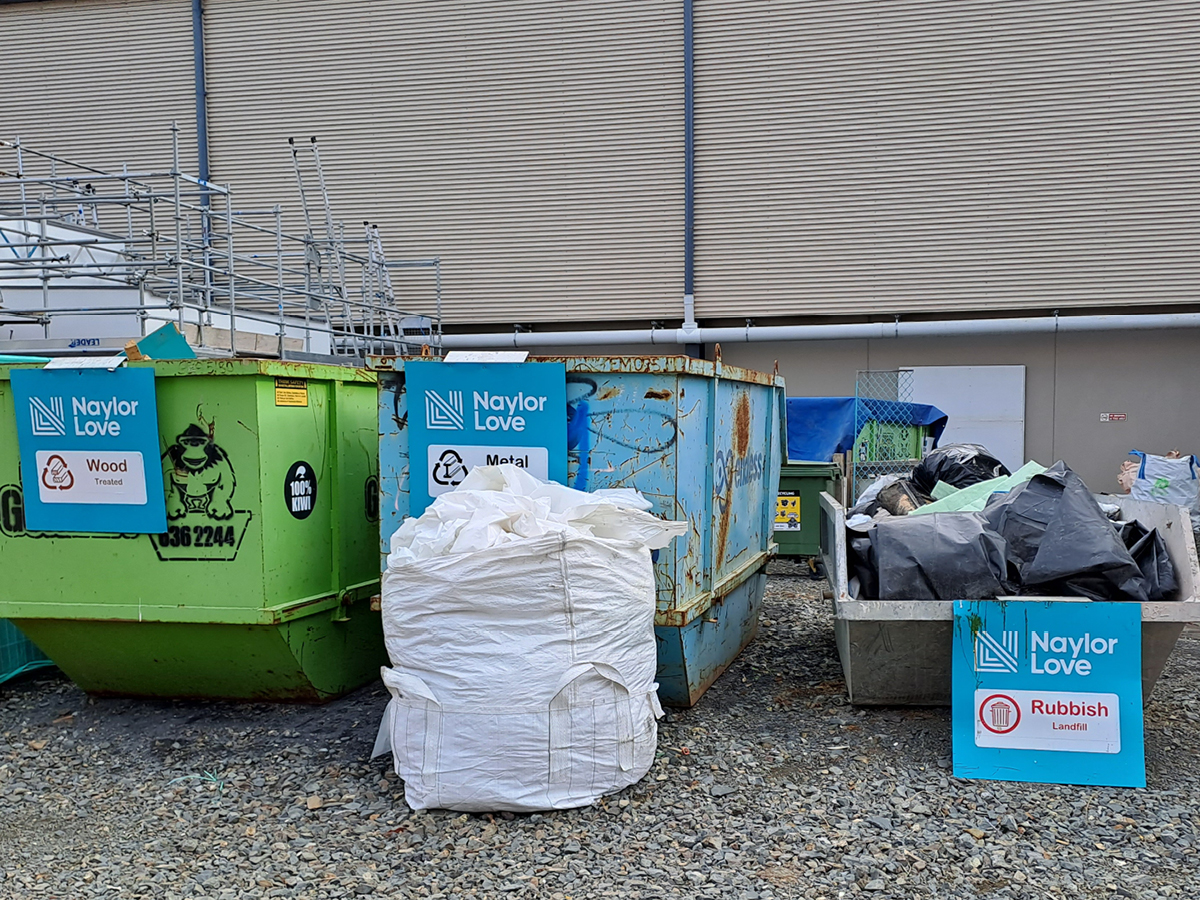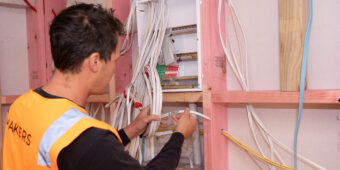Why skips are not just a load of rubbish!
22 Mar 2024, Community & Sponsorship, News, Sustainability Focus

Around 40% of all waste to landfill comes from construction. With waste being a key measure of productivity and efficiency, clients are also demanding better performance from their builders. Auckland Council’s Senior Waste Planning Specialist, Mark Roberts, explains how you can manage your skip waste more efficiently
A single skip is a typical go-to method for dealing with site waste. While this is effective, it comes with health and safety considerations.
You might not think that working around skips is a particularly dangerous activity, but there are some safety aspects in moving and managing skip bins that need to be considered.
Getting a skip onsite needs particular care and it’s important that you ensure delivery drivers are inducted and guided during delivery and pick-up to prevent incidents. Keep site staff clear from bins being lifted.
To keep everyone safe on site, sub-contractors should also be made aware of expectations around waste management and health and safety considerations.
Know a skip’s limitations
Make sure that someone on site is responsible for monitoring skips to prevent overfilling, ordering pick-ups, and stopping the area around skips being used to dump rubbish.
Overfilling your skip can prove hugely dangerous. The contents should be no higher than the sides of the skip itself. To improve the security of the skip, it’s important that you load heavier and bulkier items first.
Use trolleys, hoists, telehandlers and other plant or equipment, so that manual lifting of heavy objects is kept to a minimum.
Smaller items should be piled on top to allow the skip to fill naturally.
Skip food scraps!
Try to avoid getting food items into your skip, as this invites pests and makes recovery difficult.
Consider options to divert lunchroom waste going in your skip by providing a recycling bin. Some worksite addresses are entitled to put out a kerbside recycling bin. Check this with your local council website to see if you’re eligible.
It’s also important that you put the right stuff in the right skip. Where materials like scrap metal are separated, ensure these are properly signposted.
Standardised, multi-lingual signage can be obtained from WasteMINZ to help you communicate with staff and sub-contractors on how to use them properly.
Public placement
Consider the public when siting skips. If your skip is placed near the street, rather than on private property, you need to ensure that the ground is flat, stable, and free of any obstructions. Keep the public clear during skip delivery and pick-up.
Another thing to consider is that skips attract illegal dumping. Try to keep skips inside your site fence to discourage opportunists.
Report any instances of illegal dumping, so that the local council can deal with it.
Working with skip providers can help you manage them effectively, as well as ensuring that the skip doesn’t introduce undue safety risks.
Register to earn LBP Points Sign in



